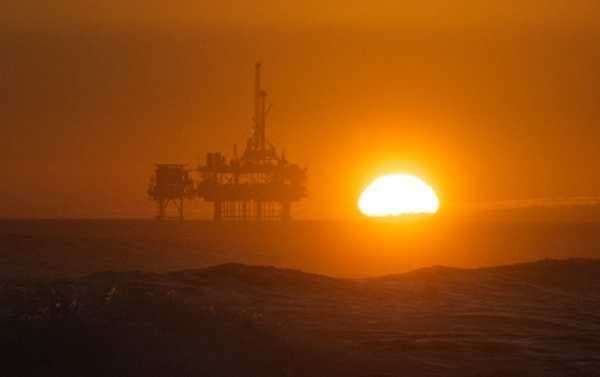
MOSCOW (Sputnik) – The International Energy Agency (IEA) has improved its forecast for oil price by 6 percent to $88 per barrel in 2025 and by 0.9 percent to $112 per barrel in 2040, according to IEA’s World Energy Outlook 2018 report.
In September, the oil price surpassed $80 per barrel for the first time since 2014 in light of geopolitical events, the decrease in Venezuelan output, and decisions made by major oil exporters, which affected production prospects, according to the report.
“In the wake of the fallout from the 2014 oil price crash, the continued expansion of tight oil production in the United States and the prospect of major structural changes in oil consumption underpinned a view that the oil price was set to stay lower for longer, perhaps forever. The reality has been different,” the report read.
According to the report, taking into account current countries’ energy policies and their announced plans, oil price is projected to gradually increase from the average price of $52 per barrel in 2017 to $88 per barrel in 2025, $96 in 2030, $105 in 2035 and $112 in 2040.
Moreover, the IEA expects world oil demand to increase from 94.8 million barrels per day in 2017 to 106.3 million barrels per day in 2040.
“China and India are responsible for nearly half of the total increase in demand to 2040. The heavy lifting on supply is led initially by the United States, but later on the Organization of the Petroleum Exporting Countries (OPEC) steadily increases its share of total oil supply,” the report read.
The agency expects that in the long term trucks, petrochemicals, aviation and cars will be among the largest drivers of world oil demand.
The decrease in the number of new upstream oil and gas projects could result in a supply crunch and a further growth of prices, the International Energy Agency said.
“Today’s flow of new upstream projects appears to be geared to the possibility of an imminent slowdown in fossil fuel demand, but in the New Policies Scenario this could well lead to a shortfall in supply and a further escalation in prices,” the report read.
According to the IEA, the largest supply crunch could be expected in the oil sector, as the average level of approvals of new conventional crude oil projects over the last three years “is only half the amount necessary to balance the market out to 2025.”
The World Bank Group said at the One Planet Summit in Paris in December that it would cease to finance upstream oil and gas projects after 2019 “to align its support to countries to meet their Paris goals.”
Carbon emissions from the energy sector are expected to increase slowly until 2040, undermining hopes of world countries to turn the corner on tackling climate change, the International Energy Agency said.
“The New Policies Scenario puts energy-related CO2 emissions on a slow upward trend to 2040, a trajectory far out of step with what scientific knowledge says will be required to tackle climate change,” the report read.
While the countries signed up to the Paris climate agreement are, in aggregate, expected to deliver on its objectives, they are insufficient “to reach an early peak in global emissions.”
“The projected emissions trend represents a major collective failure to tackle the environmental consequences of energy use. Lower emissions of the main air pollutants in this scenario are not enough to halt an increase in the number of premature deaths from poor air quality,” the report noted.
Under the Paris agreement, the governments agreed to a long-term goal of maintaining the increase in global average temperature to well below 2 degrees Celsius above pre-industrial levels.
The share of electricity produced by nuclear power plants is expected to stay at around 10 percent but generation in China is projected to surpass the European Union and the United States before 2030, the International Energy Agency also said.
“The share of generation from nuclear plants — the second-largest source of low-carbon electricity today after hydropower — stays at around 10%, but the geography changes as generation in China overtakes the United States and the European Union before 2030,” the report read.
According to the IEA, about two-thirds of today’s nuclear power plants in advanced economies are over 30 years old, reaching the end of their expected lifetimes.
“Decisions to extend, or shut down, this capacity will have significant implications for energy security, investment and emissions,” the report added.
According to the IEA, new nuclear power capacity decreased sharply to 3.6 gigawatts (GW) in 2017.
Natural gas is projected to surpass coal and become the second largest global energy source behind oil in 2030, the International Energy Agency said.
“In the New Policies Scenario, a rising tide of electricity, renewables and efficiency improvements stems growth in coal consumption… Natural gas overtakes coal in 2030 to become the second-largest fuel in the global energy mix,” the report read, adding that industrial consumers are expected to make the largest contribution to a 45 percent increase in global gas use.
While the use of industrial coal is expected to show a small increase to 2040, the IEA projects decline in overall consumption in China, Europe and North America to be compensated by rises in India and Southeast Asia.
According to the IEA, coal currently makes up a third of all energy consumed worldwide and plays an essential role in iron and steel industries.
Sourse: sputniknews.com






